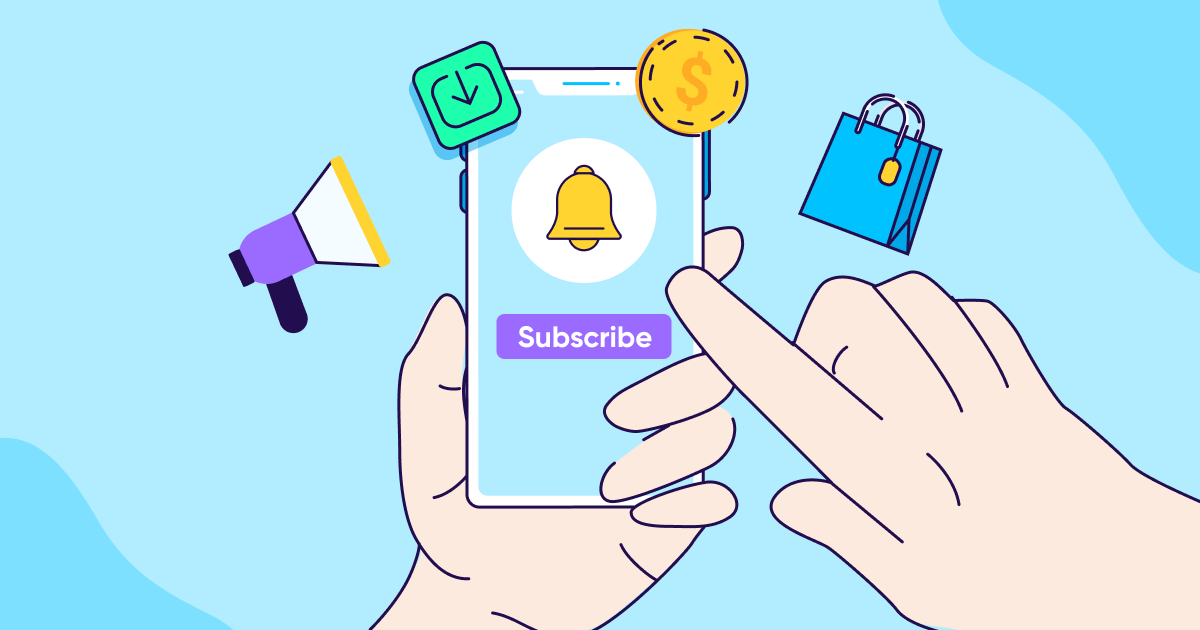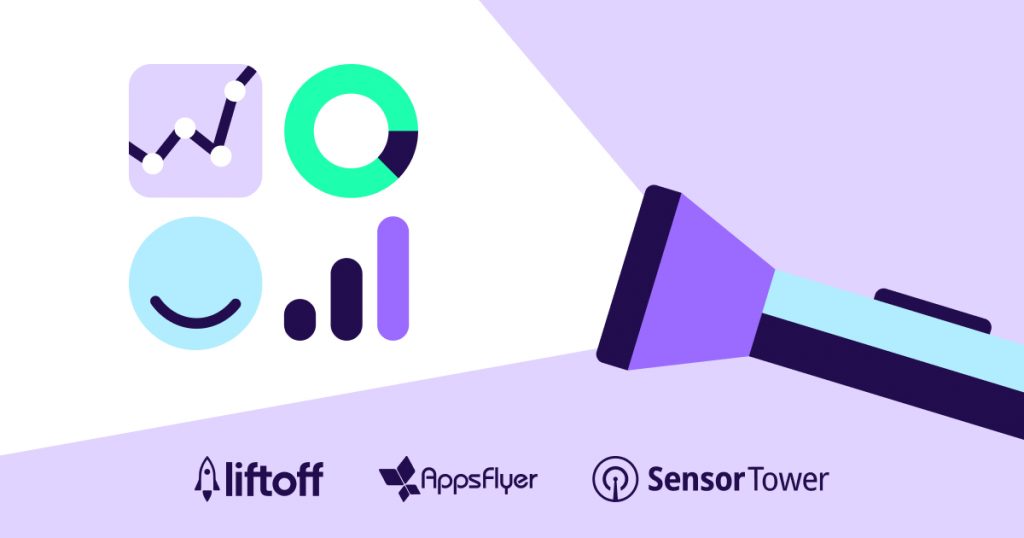
Intro
What do popular apps like Netflix, Tinder, and Spotify have in common?
They’re all subscription-based apps, where users pay a recurring fee for access to the app.
Considering all three apps enjoy global popularity and earn millions in transactions, it’s clear subscription app marketing is taking center stage. Users eagerly take up subscriptions for apps that provide value, and if your app meets this criterion, building and growing subscription-based apps is a no-brainer.
However, implementing this monetization model alone isn’t enough. You need to be prepared for the unique challenges it brings, and apply relevant best practices for maximizing app revenue and driving customer retention.
To guide you through this app monetization approach, we’ll delve deeper into different subscription pricing models. This guide will also cover the benefits, challenges, and best practices to help you establish lasting user engagement.

Chapter 1
What are subscription-based apps?
Subscription-based apps charge users a recurring fee in exchange for access to exclusive content and premium features and services. The fee is often a monthly or yearly subscription, but can also be chargeable weekly or quarterly.
When a subscription period ends, users can cancel or modify their subscriptions. But in some cases, the subscription may automatically renew.
Top subscription-based app categories
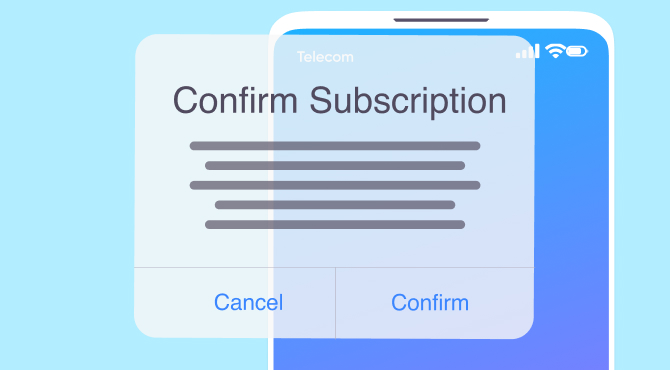
Here’s a quick look at the different types of apps that have found immense success with subscriptions:
Engaging digital content (The New Yorker, The Washington Post)
Subscription-based content apps offer exclusive, regularly updated content tailored to user interests. These apps provide diverse articles, news, features, and analysis, delivering a compelling value proposition. Extra perks such as offline reading, personalized recommendations, and access to archives further enhance the premium information experience.
Immersive gaming (Xbox Game Pass Ultimate, Apple Arcade)
Subscription-based gaming apps give subscribers several appealing benefits, including ad-free gameplay, exclusive in-game items, and early access to new features. Even casino game apps offer a variety of virtual slot machines, poker, and other casino games. Subscribers enjoy bonus credits, rewards, and special in-game features, creating an engaging and rewarding experience.
Multiplayer features and social interactions also create a sense of community within the subscription ecosystem, keeping gamers engaged and excited.
Streaming and music entertainment (Netflix, Apple Music)
Digital entertainment apps offer users a seemingly never-ending collection of movies, TV shows, and music — all on-demand — making them perfect for in-app subscriptions. Exclusive content and original shows ensure these apps stand out, promising a stellar entertainment experience. Subscription perks, in this case, can include unlimited streaming, ad-free playback, offline downloads, and personalized recommendations.
Matrimony and dating (Tinder Plus, OkCupid A-List)
Subscription-based dating apps offer premium features to enhance user experiences. Unlimited swipes, advanced search filters, and the ability to see who likes your profile increase the chances of finding compatible matches and fostering meaningful connections. Continuous improvements and new features provide a compelling value proposition beyond free alternatives.
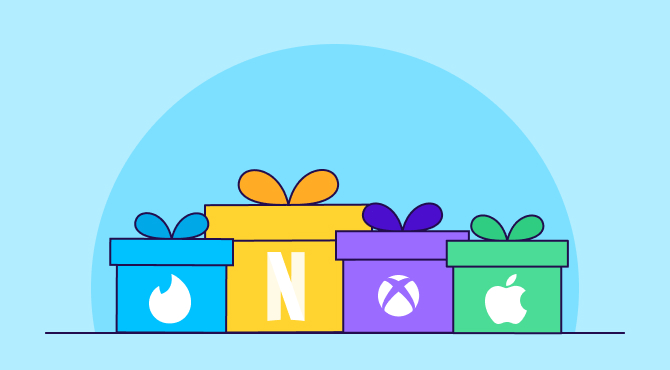
Elevated social networking (LinkedIn Premium, Reddit Gold)
Social networking apps provide users with enhanced features and exclusive content to elevate the social networking experience. These additions often include advanced privacy controls, personalized feeds, and ad-free browsing — all designed to cater to users who desire a more customized and refined social networking experience.
Productivity and efficiency tools (Evernote, LastPass)
Subscription-based service apps provide solutions for digital storage, social scheduling, and productivity management. Subscribers rely on these apps to elevate their productivity, while the consistent updates, new features, and incorporation of user feedback keep them engaged and loyal to the app.

Chapter 2
Subscription-based app models are on the rise
Thanks to the revolution of the digital landscape, the future looks bright for subscription-based app models.
As technology continues to evolve and integrate into various aspects of our lives, the demand for convenient and value-packed experiences will also continue to grow. Embracing the subscription model enables businesses to unlock new revenue streams. In fact, the revenue of the top 100 subscription apps increased by nearly 41% in 2021 alone, reaching an impressive $18.3 billion.
At this point, you’re likely wondering: why this sudden surge? It’s because:
- Modern consumers seek hassle-free experiences that provide value at their fingertips. Subscription-based apps cater to this need by offering a bundle of services at an affordable price. Instead of purchasing individual products or services, users can access a comprehensive suite of offerings with a single subscription, simplifying their lives and saving valuable time.
- Subscription-based apps also offer companies a predictable revenue stream, empowering them to plan for the long term with confidence. This financial stability enables businesses to invest in innovation, enhancing the overall user experience and driving further growth.
- Subscription-based apps foster a sense of loyalty and engagement among users. Reports indicate a notable improvement in churn rates for Subscription Economy Index™ (SEI) companies, with a 14% drop in 2021. This is because subscribers feel a sense of ownership and financial commitment, making them more likely to remain loyal. This loyalty translates into recurring revenue for businesses, establishing a solid foundation for long-term success.
Today, subscribers actively seek valuable digital services, presenting a compelling opportunity for app marketers to capitalize on and ensure long-term growth. If done right, this app monetization model will help you cater to user demands, cultivate loyalty, and monetize your apps effectively.
5 top subscription pricing models you can use

Finding the right subscription model is admittedly a tricky task. Here are the most common pricing approaches to consider for your subscription-based app.
1 — Flat-rate subscription pricing
This model offers a fixed price for all features and services provided by the app. Users are charged the same amount on a recurring basis, simplifying the billing process and offering a straightforward pricing structure.
Trello, a popular project management app, offers a flat-rate pricing model at $12.50 per user per month, providing access to all features, unlimited boards, and team members.
2 — Tiered subscription pricing
In the tiered model, apps offer different packages with varying features and price points to cater to diverse customer needs. This pricing strategy suits apps with a wide range of features and a diverse customer base. Going up a tier unlocks additional benefits and functionality, allowing users to choose the level that fits their requirements and budget.
Graphic design platform Canva popularly uses this subscription approach, offering tiered pricing with plans ranging from free to premium — each unlocking additional features, team collaboration options, and advanced design elements.
3 — Usage-based subscription pricing
The usage-based model ties the cost of the app directly to its usage level. Customers pay based on the amount they consume or use the app’s services. This model is suitable for apps where usage patterns vary widely among users.
For instance, the cloud storage app Dropbox charges users based on the amount of storage they use, with different pricing tiers for various storage limits.
4 — Per-added subscription pricing
In the per-added-module model, the app offers a core product with the option to add extra modules or functionalities for a fee. This gives users the flexibility to customize their experience by selecting the specific features they need.
A great example of this model is Autodesk Revit, a popular BIM (Building Information Modeling) software. Users can subscribe to the base software, and then add specialized modules like structural engineering or MEP (Mechanical, Electrical, and Plumbing) design according to their specific requirements. This allows users to tailor their app usage to their unique needs and preferences.
5 — Per-user subscription pricing
The per-user model charges customers based on the number of users accessing the app. Pricing scales with the number of users, making it suitable for apps that facilitate teamwork or collaboration. This approach ensures fair compensation when multiple individuals rely on the app’s services independently.
The popular team communication and collaboration app, Slack, is a great example of per-user charging, with pricing tiers based on the number of active users within an organization.

Chapter 3
Subscription-based apps’ benefits vs challenges
Like (almost) everything in marketing, subscription-based apps come with some benefits and challenges for marketers. Let’s start by digging deeper into the pros of getting mobile app subscription right, and then look at some potential pitfalls.
Benefits of subscription-based apps
- More reliable income: Unlike one-time purchases, subscriptions offer a consistent stream of income, allowing you to plan and allocate resources effectively. You can confidently invest in marketing efforts and develop new features without the constant fear of financial instability. What’s more, offering discounts for longer subscription periods further enhances income predictability and entices users to commit to extended plans.
- Seamless promotions: Subscription models provide a fantastic opportunity to promote your app’s popular features and exclusive content. With well-timed and enticing offers, you can encourage users to subscribe and unlock premium benefits. By highlighting the value they’ll gain, you can effectively market your app’s standout features and consumables, driving conversions and increasing revenue.
- Higher engagement and increased user loyalty: When people subscribe, they actively invest in enhancing their app experience, leading to increased loyalty. Add to this regular content updates and feature releases, and you have subscribers hooked and eager to explore new offerings. This strengthens brand loyalty, improves user retention, and increases the likelihood of referrals. And as your user base grows and becomes more engaged, your app’s lifetime value (LTV) improves, resulting in greater exposure and better rankings in app stores — plus, more resources to invest in developing new content and features to keep the engagement going.
- Higher ATT opt-in rate for gaming apps: For gaming app developers, there’s an extra advantage to adopting the subscription-based model: a higher opt-in rate for App Tracking Transparency (ATT). Subscription gaming apps experience a significantly higher rate of user opt-ins for tracking. This is great news for you as it means more users are willing to share their data, giving you valuable insights to personalize experiences and implement targeted strategies to enhance user satisfaction and drive app growth.
- Improved ranking on Apple’s App Store: Apple has incentivized subscription models on its App Store, offering a more favorable revenue split of 85:15, compared to the standard 70:30 split, to app developers who retain customers for longer periods. This means Apple is on your side, rewarding your efforts to retain customers and aligning their interests with yours. Leveraging this opportunity can lead to higher rankings for your app and increased visibility within the Apple ecosystem.
Challenges of subscription-based apps
- Providing regular content and updates: Users have high expectations, and failing to provide ongoing value can result in subscription cancellations. To maintain user engagement and loyalty, you have to consistently deliver new, high-quality content and updates. This way, paying users will be excited about your app and continue their subscriptions with enthusiasm.
- Onboarding and free trial period: Properly onboarding users and showcasing your app’s value convinces them to become paying subscribers. Finding the right trial period can be challenging, as users need enough time to experience the app’s benefits. Striking the right balance is key to demonstrating your app’s value and converting trial users into loyal subscribers.
- Prompt customer support: Subscribers expect dependable and prompt customer support for their investment in your app. And providing excellent support is the only way to meet this demand while enhancing user satisfaction and minimizing churn. Admittedly, building a strong support team comes with expenses, but it’s crucial for retaining engaged users. Plus, you can use the recurring subscription revenue to fund these support services.
- Potential backlash during transition: Switching from a one-time fee to a subscription model may lead to backlash from existing users. But with the right approach, you can navigate this change smoothly and ultimately encourage acceptance. This involves engaging with and actively listening to user concerns while highlighting the long-term benefits of the subscription model.

Chapter 4
7 subscription-based best practices for app marketers
How do you ensure your subscription-based app is a roaring success? Here are a few tips:
1 — Offer value-driven pricing
Offer different subscription tiers that cater to the diverse needs and budgets of your users. This way, they can choose the level of access and features that best suits them. Don’t forget to sweeten the deal by providing discounted rates for long-term subscribers: this not only boosts your revenue but also fosters customer loyalty.
Imagine you have a language-learning app with three subscription tiers: Basic, Premium, and Deluxe. The Basic tier provides access to core language lessons, while the Premium tier offers personalized study plans and interactive exercises. For users seeking the ultimate language-learning experience, the Deluxe tier provides unlimited access to all courses, live tutoring sessions, and exclusive content. By offering these three tiers, you cater to diverse user preferences, boosting revenue through higher-tier subscriptions and keeping users engaged.
2 — Provide a compelling free trial period
Engage potential subscribers by offering a free trial period that lets them experience the full value of your app. Give them temporary access to premium content and features, showcasing the app’s potential and benefits.
Take Amazon Prime’s generous 30-day free trial, for example. During this trial, users can explore the app’s premium services, user experience, and streaming quality. Providing a sneak peek of these paid features can significantly boost the likelihood of users converting to paid subscriptions.
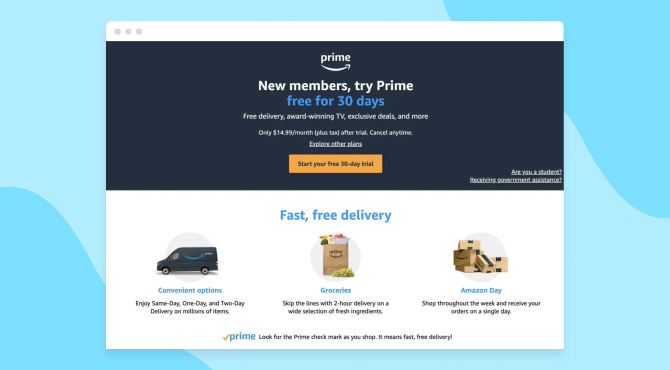
3 — Nurture engagement and reduce churn
Keep things fresh and exciting by regularly updating your app with new content, features, and improvements. Personalize the user experience with tailored recommendations and notifications that align with their preferences. And don’t forget about providing excellent customer support – address any issues promptly to demonstrate your commitment to subscriber satisfaction.
Subscription-based fitness apps frequently offer each subscriber custom exercise programs and send personalized workout reminders and progress reports. Some even allow users to connect, share achievements, and support one another, creating a sense of community that not only boosts user satisfaction but also encourages long-term subscriptions and reduces churn.
4 — Leverage upselling and cross-selling opportunities
Capitalize on your existing subscriber base to increase revenue by leveraging upselling and cross-selling strategies. Identify opportunities to upsell users to higher subscription tiers with additional features or exclusive content. For cross-selling, try promoting complementary products or services that align with your app’s offerings, creating additional revenue streams.
5 — Nail your onboarding experience
When introducing your app, focus on showcasing its value and engaging users before presenting the subscription option. For apps with a “pay to use” model, it’s important to highlight the app’s worth without pushing subscriptions too soon. For apps with a “pay to upgrade” model, guide users through core features during a free onboarding stage and provide a clear path past the paywall.
Once your users have a solid understanding of the app’s capabilities, educate them about the benefits of a paid subscription and the additional features it offers. Spotify’s approach of offering its premium plans for free in the first month is a masterstroke: it enables users to understand the app’s paid plan benefits before introducing the subscription offer, leading to higher conversion rates.
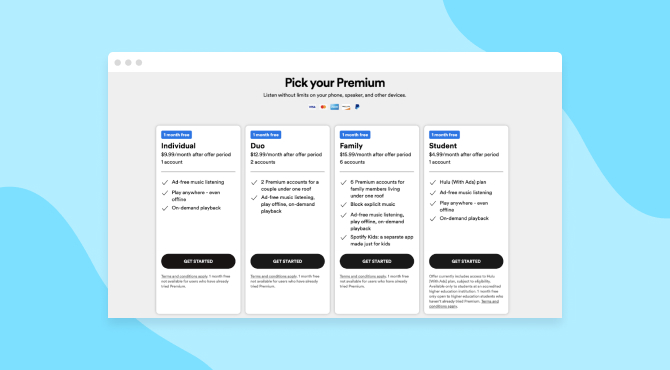
6 — Be scrupulously honest and transparent
Trust and a strong brand reputation are crucial to success in the world of subscription-based apps. Make cancellation processes clear and accessible, ensuring users can easily find links or buttons to cancel their subscriptions and don’t have to jump through hoops. By being transparent and respectful, and prioritizing user financial well-being, you establish trust and foster a positive user experience. When customers feel valued and appreciated for their commitment, they’re more likely to remain loyal subscribers.
7 — Measure and optimize your subscriptions
Thoughtful measurement analytics is critical for your app’s success. Keep a close watch on key metrics like conversion rates and acquisition costs to gauge the effectiveness of your subscription model. You can also conduct cohort analysis to gain insights into user behavior and fine-tune your free trial period based on how quickly users convert to subscriptions.
For instance, suppose you have a fitness app offering a seven-day free trial. After examining user data, you discover a significant number of users who complete the trial end up subscribing to your premium service. Armed with this knowledge, you can extend the free trial period to 10 days, providing users with more time to experience the app’s benefits — a move that’s likely to improve conversions and boost ROI.

Key takeaways
- Popular subscription-based apps like Netflix, Tinder, and Spotify charge users a recurring fee for exclusive content and features. Users can modify or cancel subscriptions, and some subscriptions renew automatically.
- Successful subscription-based apps span various categories, including digital content, gaming, streaming, dating, social networking, and productivity tools.
- The rise of subscription-based apps is driven by the demand for convenient, value-packed experiences. Subscriptions simplify users’ lives, offer comprehensive packages, and provide businesses with predictable revenue. This fosters user loyalty and recurring revenue and allows long-term planning and innovation.
- Common subscription pricing models include flat-rate, tiered, usage-based, per-added, and per-user. Each model has its advantages and suits different types of apps.
- Subscription-based apps offer reliable income, increased engagement and loyalty, seamless promotions, and benefits like higher ATT opt-in rates and improved rankings. Challenges include content updates, free trials, customer support, and potential backlash.
- To succeed with subscription-based apps, offer value-driven pricing, compelling free trials, personalized experiences, upselling opportunities, smooth onboarding, and transparent cancellation processes — and don’t forget to optimize the experience using key metrics.

